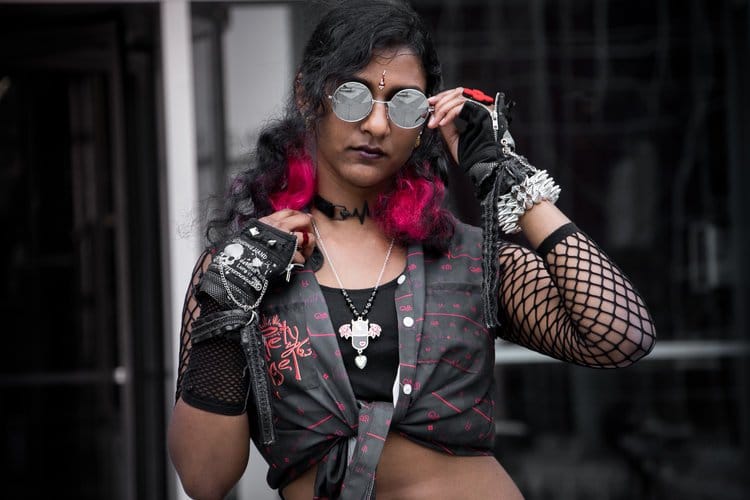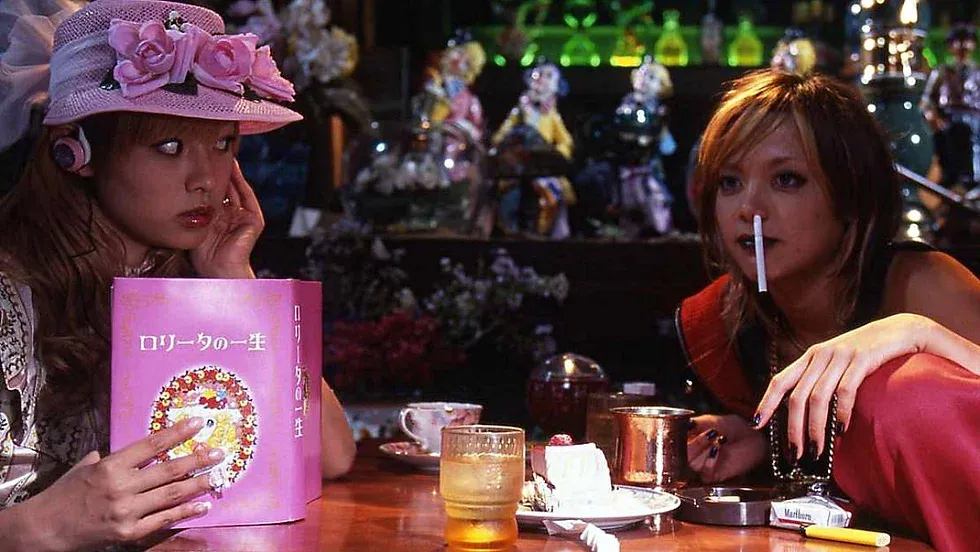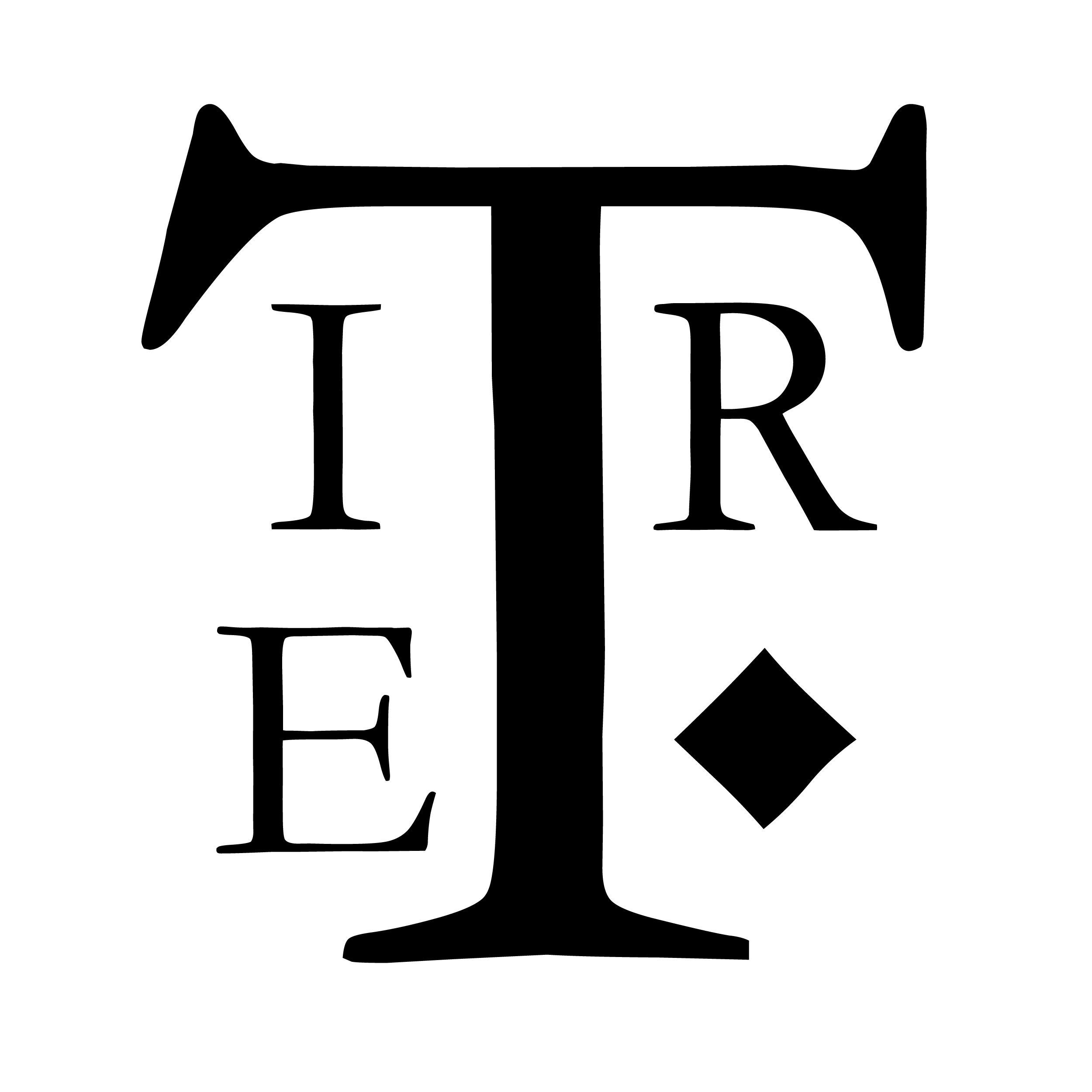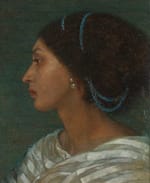Genre-Queer

Heisei Pistol Show (hereafter referred to as Heisei) is a time capsule of a game, full of visual expression that’s closely aligned with principles of Outsider and vent art. As a game about Heart, a former sex-worker-turned-assassin who is inspired by Lolita subculture ideals of maidenly femininity, Heisei is a personal manifesto adjacent to the Menhera subculture of the early 2000s (more specifically 2008-2009). Parun, the creator of this RPG Maker title-in-translation, may or may not have self-described himself as a Menhera, a.k.a. a “mental healther” who advocates for self-care as well as accessible details in fashion design for those with invisible illnesses, chronic conditions, or disabilities. But his 2008 title explores themes relevant to the Menhera community: discrimination due to mental health, chronic illness, and sometimes intersection with queer identity.
On that last count, Heisei comments on how conservative elements of Japanese society conflate queer identity with mental illness, as Heart suffers from herpes encephalitis. Interviews with Heart’s neighbours and a relative in one of the game’s many interludes allude to him contracting this condition while working as a “rent boy” (although rent boys don’t always perform sex work). They describe Heart’s identity and lifestyle as being “annoying”, “uncomfortable”, and even the result of being a faithless child of the Devil. The last hyperbolic statement is an opinion Heart has deeply internalized, as he often refers to himself as someone who will go “straight to hell” after he dies. He also speaks of how even his victims have more purity than he does, as souls in purgatory. More on that later.

Hyperbole is a key technique of Parun’s narrative inspirations, in fact. The game is inspired in part by Memories of Matsuko, a Nakashima Tetsuya movie with similar themes of love, abuse, and revenge.[1] Heisei even takes a graphic from in that film–a silhouette of a woman against a bright red backdrop– and incorporates it into one of the many musical interludes throughout the game. There’s also echoes of the splatter horror films of that era, like Iguchi Noboru’s The Machine Girl. Heart refers to the torture dungeon environment in Heisei as “a happy room,” a purgatory where his victims are being “cleansed of sin”. Parun, Nakashima, and Iguchi are known for their idiosyncratic styles. These creators can turn their stories’ atmosphere from existential sadness to cartoonish (though often bleak) comedy on a dime.[2] They also blur the lines of characters’ internal fantasies and their external, often harsher everyday realities.

According to fashion designer and activist Puvithel, a prominent figure of the western Menhera community, the Menhera title is often conflated with other J-fashion subcultures that are more aesthetic-focused, such as Yami Kawaii or Jirai Kei. Menhera is first and foremost about advocating for those who describe themselves as mental healthers. Even attaching the suffix “kei” to Menhera as a term is contentious, as it’s reductive and focuses on “things associated with [or] stereotypes of” an aesthetic style. Similar to Lolita subculture, Menhera is not just about the aesthetics of the associated fashion and art; it’s about the empowering lifestyle one leads as a result of the philosophy that inspires the fashion.
The western Menhera community in particular is similar to the Mad community in North America, which seeks to decrease stigma around neurodivergent people and invisible illnesses. Mad activists reimagine the language, media representation, and structures of mental health institutions so that “mad” people are centred in the process of care and treatment. Parun’s work, in Heisei and his final game Re:Kinder (a remake of his 2003 title Kinder), explore serious topics of loneliness, stigmatization, and suicide. And it does so by centering the voices of the marginalized. Heart is an agent of change in his story and chooses to define himself however he wishes, even in the face of verbal and physical abuse by his family and others.
In spite of Heisei’s flashiness and surreality, the game is at its core a lyrical expression of the failings of their society to support and include people like Heart. Like Menhera vent art and fashion, Heisei is an expression of people who don’t fit ideal and convenient categories or roles for productive participation in a change-resistant society. It’s no coincidence that Parun references classic poetry and Kabuki theater throughout Heisei. In addition to male sex workers like Heart having a historical connection to Kabuki, I believe Parun is highlighting the performative nature of love, sex, and gender. Heart is constantly performing his identity; his life and death are made into a show. Even when he faced abuse by his own father, Heart’s way of coping with that trauma was to perform himself as if he wasn’t scarred by the events and was in fact happy. He sings a lullaby to himself and others repeatedly as an echo of this core event.
However, Heisei contains visual and technical elements which are at odds with the aims of Menhera to create a more accessible landscape for those living with chronic conditions, illnesses, or mental health issues. Despite the warning at the game’s start that it is full of flashing lights, the game is almost prohibitively stylistic. For instance, as someone who identifies as highly sensitive and borderline autistic, I found that I often had to plan ahead for my play sessions to complete the game. Heisei is chock full of bombastic light effects, a repetitive and loud soundtrack full of electric guitar riffs and big band instrumentation, as well as many acid-hued colour palettes in its trippier environments.
The most challenging part of the game wasn’t the unique turn-based pistol fights with Heart’s former colleagues and friends, The Top Three, but the inevitability of sensory overload. I often felt like I had a progress bar tracking hypersensitivity above my head as I played, which made me aware that while the game can be described as Menhera in representation, it doesn’t sit comfortably within that definition. In short, while the game often aligns with Menhera vent art’s goals of catharsis and identity affirmation, it’s not a game formulated specifically for the Menhera community.
Parun and his work are meant to be replayed, ruminated on, and discussed with others more than once. In the post-credits gameplay, NPC Matsusato explains that Heart’s story is deliberately dissolving the boundaries of reality and dreaming. This happens not just in a psychological sense for Heart and his temporal world, but his visceral one as well. In pursuing sex work, Heart breaks down social and cultural barriers. Furthermore, he breaks down his past relationships with violence, likely closing the loop of his own trauma. His body is also breaking down from this cycle of abuse, both mental and physical. The herpes encephalitis he suffers from affects the epithelial cells of his body, causing increasing neurological damage over time. However, despite this illness being used in a metaphorical sense, the way that the game comments on stigmatization of individuals like Heart resists a simple one-to-one signification. Heisei is a case-in-point that games, as scholar Bo Ruberg states, were always unapologetically queer and avant-garde.[3] I look forward to our two contributors sharing their perspectives on this important time warp of an indie game.

It’s worthwhile to note that Memories of Matsuko is also directed by Nakashima Tetsuya who is also known for Kamikaze Girls, an adaptation of a novel oft-considered a Lolita subculture classic. As Parun heavily references the complex nature of maidenly femininity and how Lolita acts as a way for Heart to live out his fantasies of becoming a princess, I don’t think it’s unlikely he wasn’t inspired by this influential film as well for Heisei. ↩︎
The interlude for Heartbeat, the second member of the Top Three assassins Heart fights against, includes some questionable racial humor for instance. Yet racialized NPCs throughout the game are also used seemingly as markers that queer folk like Heart are not the only people affected by discrimination. The metaphors are thorny but seem well-intentioned. ↩︎
See Bo Ruberg, Video Games Have Always Been Queer published by NYU Press Books (2019) and The Queer Games Avant-Garde published by Duke University Press Books (2020). Both texts argue that games are queer not just in regards to representation but theory and practice as well. Ruberg’s introduction to the former observes that, “[q]ueerness and games share a common ethos: the longing to imagine alternative ways of being and make space within structures of power for resistance through play.” (1) ↩︎


